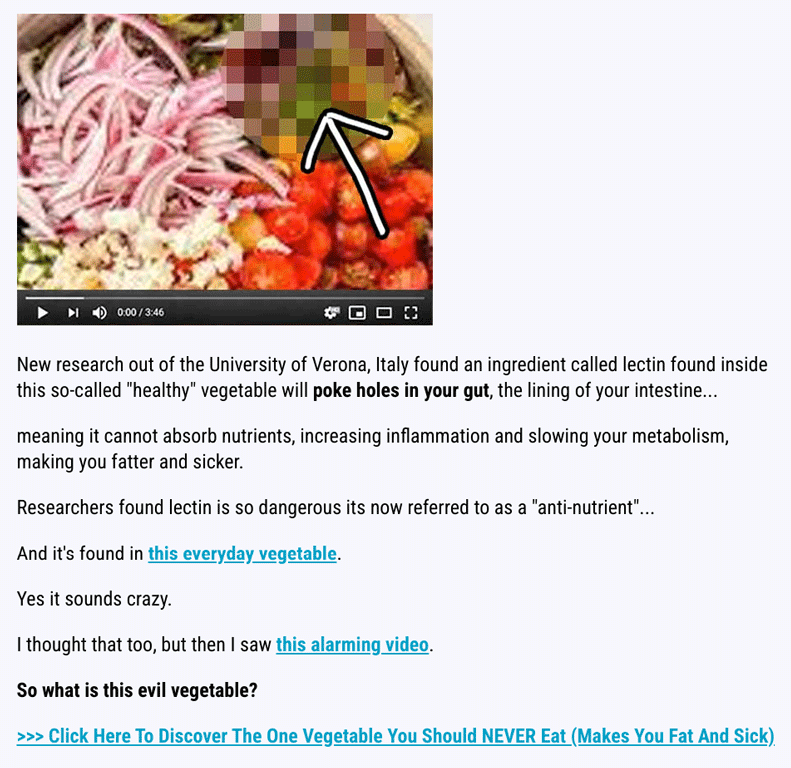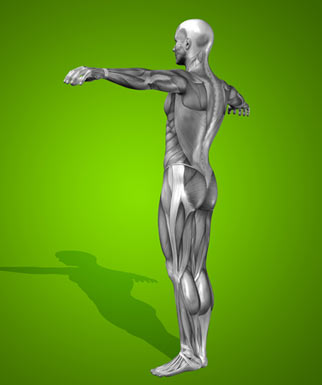
This Fungus Affects Over 500 Million People. Graphic © herbshealthhappiness.com. Candida illustration © Kateryna_Kon – fotolia.com (under license)
Candida is a genus of yeasts and is the most common cause of fungal infections worldwide. Yeasts are single-celled fungi and can cause infections when they grow on the body’s mucous membranes.
The statistics for occurrence of candida are astonishing and shocking. It has been estimated that 75% of all adult women (of childbearing age) will be afflicted by VVC (vulvovaginal candidiasis) at least once in their lifetime – that’s over 2.7 billion women. Of these, approximately 150 million suffer from recurring bouts of the condition. [1] And this is not the only possible type of candida infection or region of the body it can occur in.
There have been numerous controversial claims for candida, with it sometimes being held responsible for numerous further serious health conditions. These claims are difficult to ascertain. One thing that is known is that candida is a normal resident of the digestive tract, so in one sense, everyone “has candida”! However under normal conditions, the body keeps it under control and it will not be causing an infection or sickness.
 Photo – Wikipedia lic. under CC 3.0
Photo – Wikipedia lic. under CC 3.0
According to the CDC, invasive candidiasis is the most common type of healthcare-associated infection – however despite annual sales in the hundreds of millions of dollars for OTC vaginal antifungals [2] the statistics for candida infections in the US have gone up in the past 20 years. [3]
Candida infections can occur in any part of the body with a mucous membrane, typically the mouth, throat, and female genitals. The CDCs reports an emerging fungus, Candida auris, as a potential global health threat, causing hospitalizations all over the world and being “resistant to all three major classes of antifungal drugs”. [4][5][6] (Editor’s note – did they consider natural remedies? No! have you ever heard of fungal infections becoming immune to natural remedies? No!)
Systemic / Invasisve Candidiasis
Invasive or systemic candidiasis occurs when the infection spreads from beyond the mucous membranes to the blood. This is a serious infection that can affect the blood, heart, brain, eyes, bones, or other parts of the body. Diagnosis can be difficult, as the symptoms vary depending on the organ affected. Typical treatments are oral or intravenous antifungal medications.
Signs And Symptoms Of Candidiasis:
Vaginal infections: itching of the vagina and vaginal opening, painful intercourse and/or urination, inflammation (redness and swelling) of the vaginal opening, vaginal pain, watery vaginal discharge or thick, white odorless discharge [7]
Mouth infections (oral thrush): white lesions on the tongue, inner cheeks, roof of the mouth, gums, and tonsils (almost cottage-cheese like in appearance), mouth soreness, dysphagia (difficulty swallowing), cracking at the corners of the mouth, problems with taste [8]
Systemic candidiasis: Symptoms can include fever and chills that do not improve with antibiotics.
Nail fungus and athlete’s foot
Some Natural Ways To Manage A Candida Infection:
1. Diet – The “Candida Diet” eliminates sugar (regarded as enemy #1!), white flour, alcohol coffee, reduces starchy vegetables (carrots, radishes, yams, parsnips, potatoes) and fruits – and includes fresh, organic steamed non-starchy vegetables, rice, millet, healthy fats i.e. coconut oil, plenty of pure water, fermented vegetables, manuka honey, garlic, chia seeds, turmeric, lemon juice, apples, apple cider vinegar. It has been suggested by some that candida may fuel sugar addiction.
2. Yogurt And honey Topical – For vaginal infections, the best way is still to seek medical advice regarding what creams and oral medications you can take to manage the infection. However, there are several studies that have focused on the benefits of using yogurt (as unconventional as it may seem) on the affected areas. Darvishi, et. al. published a study in 2015 reporting that there were significant therapeutic effects of using natural (probiotic) yogurt and honey on vaginal candidiasis, achieving similar results to antibiotic (clotrimozole) vaginal cream. [9] Use raw, pure honey (typically not the major brand varieties as some may be adulterated with HFCS!)
3. Oral Hygiene – Oral thrush is a little easier to manage, with focus being placed on good oral hygiene in order to prevent and treat oral candidia infections. [8] Brush your teeth at least twice a day and floss at least once. Don’t forget to keep replacing your toothbrush regularly, especially during and after the infection has cleared up. Avoid using mouthwash (unless ordered by your doctor) because this might irritate the lesions or cause new ones in your mouth. Mouth wash can also alter normal microorganisms in the mouth and can slow the healing process. Use a saltwater rinse. Mix half a teaspoon of salt in a glass of water and swish around your mouth for several seconds. Don’t swallow it, spit it out.
4. For breastfeeding women, it is advisable to use nursing pads (avoid plastic pads, as they are a perfect place for Candida to grow). Pads can prevent the infection from sticking to your clothes. If you using resusable pads, don’t forget to wash and bleach them thoroughly.
5. Overall Cleanliness – To fight both vaginal and oral candidiasis, make sure to practice good hygiene. Take daily baths and don’t forget to clean your genital area; put on fresh thoroughly washed clothes and change underwear daily.
6. Probiotics have been suggested by numerous scientific studies as a potential candida remedy. [10]
7. Socks and Shoes – Change socks very frequently. Twice a day or more is fine. If you suffer from fungal infections on your feet, rotating shoes rather than using the same pair daily may be beneficial also. UVC sterilizer lamps – the kind that sit inside shoes to zap fungus – may be beneficial too. Here’s a UVC shoe sanitizer we found on Amazon
References:
[1] “Candida Vaginitis: When Opportunism Knocks, the Host Responds”. PLoS Pathog. (2014) https://www.ncbi.nlm.nih.gov/pmc/articles/PMC3974868/
[2] “Candida Infections of the Genitourinary Tract”. (Clin Microbiol Rev. (2010) https://www.ncbi.nlm.nih.gov/pmc/articles/PMC2863365/
[3] Centers for Disease Control and Prevention. Invasive Candidiasis Statistics. https://www.cdc.gov/fungal/diseases/candidiasis/invasive/statistics.html
[4] Centers for Disease Control and Prevention. Candidiasis. https://www.cdc.gov/fungal/diseases/candidiasis/
[5] Centers for Disease Control and Prevention. Candida auris. https://www.cdc.gov/fungal/diseases/candidiasis/candida-auris.html
[6] Wikipedia – “Antifungal”. https://en.wikipedia.org/wiki/Antifungal
[7] The Mayo Clinic. Yeast infection (vaginal). https://mayoclinic.org/diseases-conditions/yeast-infection/basics/symptoms/con-20035129
[8] The Mayo Clinic. Oral thrush. https://mayoclinic.org/diseases-conditions/oral-thrush/basics/symptoms/con-20022381
[9] Darvishi, M., et. al. (2015). The Comparison of vaginal cream of mixing yogurt, honey and clotrimazole on symptoms of vaginal candidiasis. https://www.ncbi.nlm.nih.gov/pubmed/26153168
[10] Pubmed search on probiotics + candida. https://www.ncbi.nlm.nih.gov/pubmed/?term=probiotics+candida
★ Get My Books - 100% FREE:
😳 Tinnitus And Brain Health?
After 47 years of studies and countless brain scans done on more than 2,400 tinnitus patients, scientists at the MIT Institute found that in a shocking 96% of cases, tinnitus was actually shrinking their brain cells.
As it turns out, tinnitus and brain health are strongly linked.
Even more interesting: The reason why top army officials are not deaf after decades of hearing machine guns, bombs going off and helicopter noises…
Is because they are using something called "the wire method", a simple protocol inspired by a classified surgery on deaf people from the 1950s...
★ How To Get Rid Of Nail Fungus:
★ Does Your Salad Contain This Vegetable?
★ 20 Natural Painkillers In Your Kitchen (Video):
★ Men's Prostate Health:

2. Famous Chef Sheds 60lbs Researching New Paleo Recipes: Get The Cookbook FREE Here
3. #1 muscle that eliminates joint and back pain, anxiety and looking fat
4. 7 odd foods that KILL your abdominal fat (surprising fat-fighters)
5. The TRUTH about bread (Will surprise you!)
6. [PROOF] Reverse Diabetes with a "Pancreas Jumpstart"
7. Here's What Happens When You "Unlock Your Hip Flexors"
8. The #1 WORST food that CAUSES Faster Aging (beware -- Are you eating this?)
The #1 Muscle That Eliminates Joint And Back Pain, Anxiety And Looking Fat
By Mike Westerdal CPT
Can you guess which muscle in your body is the #1 muscle that eliminates joint and back pain, anxiety and looking fat?
This is especially important if you spend a significant amount of time sitting every day (I do, and this really affects me in a big way!)
Working this "hidden survival muscle" that most people are simply not training because no-one ever taught them how will boost your body shape, energy levels, immune system, sexual function, strength and athletic performance when unlocked.
If this "hidden" most powerful primal muscle is healthy, we are healthy.
Is it...
a) Abs
b) Chest
c) Glutes
d) Hip Flexors
Take the quiz above and see if you got the correct answer!
P.S. Make sure you check out this page to get to know the 10 simple moves that will bring vitality back into your life:
If you enjoyed this page:














